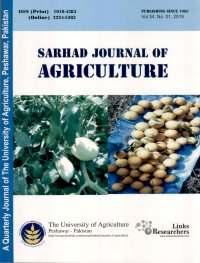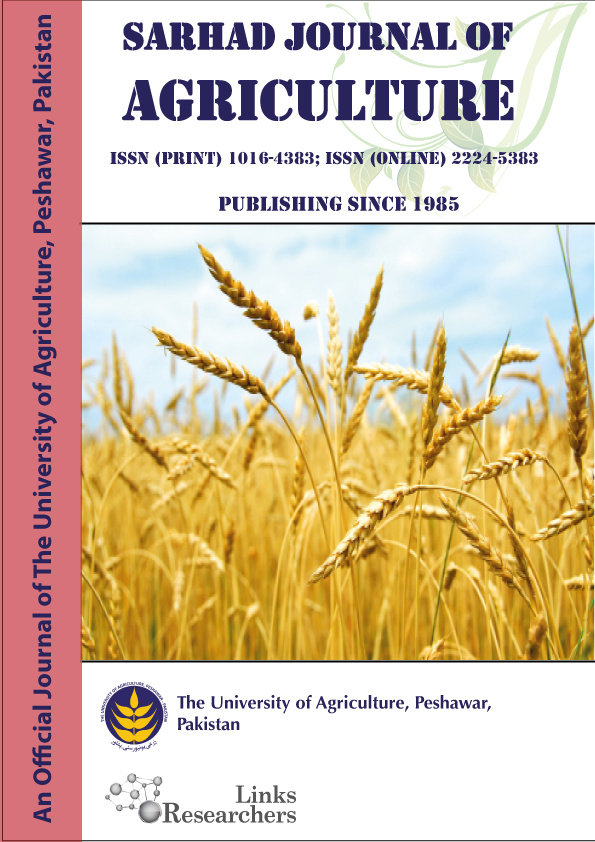Comparative Foraging Behavior of Honey Bee Species A. cerana (F) and A. mellifera (L)
Comparative Foraging Behavior of Honey Bee Species A. cerana (F) and A. mellifera (L)
Hamza Iftikhar1, Ranra Jalal2, Mansoor Ali Shah1, Syed Anas Shah Bacha1, Amjid Ali1 and Syed Majid Rasheed1*
ABSTRACT
An experiment was conducted to compare the foraging behavior of two honey bee species i.e., A. mellifera and A. cerana in Langstroth hives and A. cerana in traditional mud hives across eight weeks and three-time durations (T1, T2 & T3) at the Directorate of Non-Timber Forest Products (NTFP), Forest Department Khyber Pakhtunkhwa, Peshawar during spring, 2020. The highest outgoing foraging was recorded for A. cerana in a traditional mud hive (46.54), followed by A. mellifera (44.84), and the minimum outgoing foraging was recorded from A. cerana in a Langstroth hive (44.76). Considering outgoing, incoming and foragers returning with pollen, T1 (0700-0800 hr) was best time, whereas the foragers returning with water or nectar the most active time was T3 (1100-1200 hr). Weeks were inversely proportional to foraging behavior due to increase in temperature as predicted by returning of foragers with water and nectar. The pollen collection sources for A. mellifera and A. cerana, were 4 and 6, respectively. There was no significant difference in the ash and moisture content of the pollen of honey bee species. In contrast, the sugar concentration of A. mellifera pollen was higher than that of A. cerana in the Langstroth hive and A. cerana in the traditional mud hive when the three glucose-D standards were used to compare them to each other. Thus, it can be concluded that A. cerana in traditional mud hive shows better foraging performance as compare to A. mellifera and A. cerana in Langstroth hive.
To share on other social networks, click on any share button. What are these?








